I’m a huge fan of The Legend of Zelda: A Link to the Past, but I hadn’t played all the way through its direct sequel on the Nintendo 3DS, A Link Between Worlds, until recently. I can’t believe I’m saying this, but I like it more than the original.
At first glance, A Link to the Past seems to share so much in common with A Link Between Worlds that you could mistake the 2013 Nintendo 3DS game for a modernised remake of the 1992 SNES game, rather than a sequel. (In Japan, the 3DS game is called The Legend of Zelda: Triforce of the Gods 2, making it clear that it is a direct sequel to the SNES game.) While the graphics have been updated from sprites to polygons, the structure of the gameplay is nearly identical: Link gathers three pendants, unlocks the Master Sword in the Lost Woods, then rescues the seven sages along with Princess Zelda. By the end of both quests, Link has triumphed over Ganon, used the power of the Triforce, and saved Hyrule.
It’s in the details that the differences appear, starting with the switch from a more linear experience to one that follows the very first Zelda’s open-world philosophy. The deeper I got into A Link Between Worlds, the more I realised how it improved on A Link to the Past in almost every way, to the point that it superseded it. A Link Between Worlds plays with the formula established in A Link to the Past, subverting the expectations established in the original while also being respectful of its legacy. For me, Worlds’ story was so compelling that it elevated the sequel above the original in ways that surprised me.
The Link Between His Past And The World Around Him
It’s hard to overstate how sublime and polished The Legend of Zelda: A Link to the Past felt back when it first released in the States on the Super Nintendo 1992. While the first two Zelda games on the 8-bit NES established much of the visual and gameplay language that would define the series, A Link to the Past was the ultimate refinement of that lexicon. It codified norms the series would mostly follow for the next 20 years, creating a linear experience with carefully crafted gameplay. Most of the experience from those first two games revolved around seeking out labyrinths and palaces, aka the dungeons, and conquering them with the equipment in Link’s arsenal.
A Link to the Past gave us better combat, more control over Link’s movements, and complex dungeons that felt like actual places, not just puzzle rooms spliced together. The architectural dimensions of A Link to the Past’s dungeons gave a sense of depth, connectedness, and breadth that the previous games lacked. It also established the idea that the treasure found inside each dungeon was the primary tool with which a given dungeon could be overcome. In the Swamp Palace, the hookshot isn’t just used to get to new parts of the area, but also to help defeat the boss, Arrghus, with its cluster of eye monsters. The new equipment also plays a similar role to item progression in metroidvania games: For example, the hookshot lets Link cross a broken bridge in the Dark World to get to the Skull Woods.
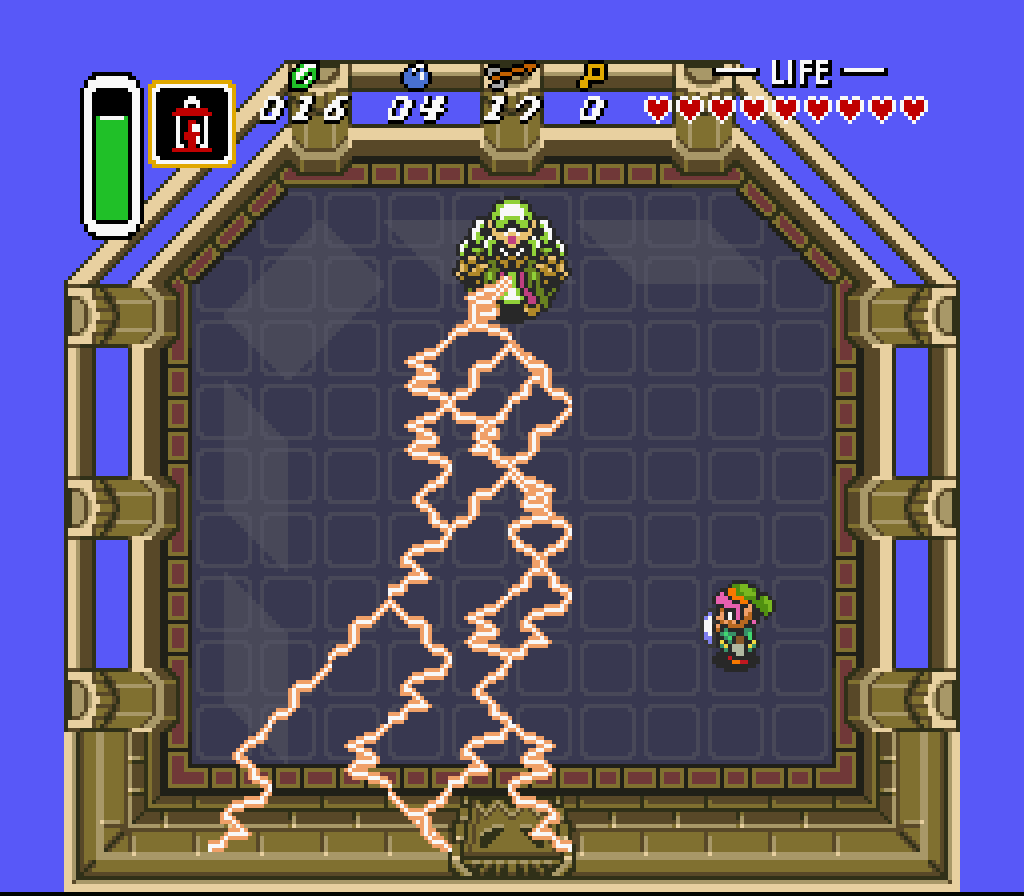
When I first defeated the antagonist of A Link to the Past’s first few hours, the wizard Agahnim, I actually thought the game was over. I felt disappointed that it was so short! But suddenly, as Agahnim escaped and Link was transported to the top of the pyramid in the Dark World, I was stunned to realise there was a whole lot more questing to do.
The threads that connect the Light and Dark worlds led to some brilliant game design choices. One simple example would be a heart container that is visible, but not accessible, in the Light World. Link must travel to the corresponding point in the Dark World, then jump between worlds, to get it. It encouraged players to think beyond the immediate surroundings and take the alternate dimension into account. A Link to the Past is considered a masterpiece for good reason, and has stood the test of time pretty well. I’d easily consider it one of the best games in the series, up there with Ocarina of Time and Breath of the Wild.
It’s hard for any new Zelda game to live up to that Link of the past. When I first started playing A Link Between Worlds, the world felt too similar to the SNES game’s, and I actually stopped playing for a few months. This turned out to be a big mistake, since it’s only after the first confrontation with Yuga, when Link is changed into a 2D painting, that things really change.
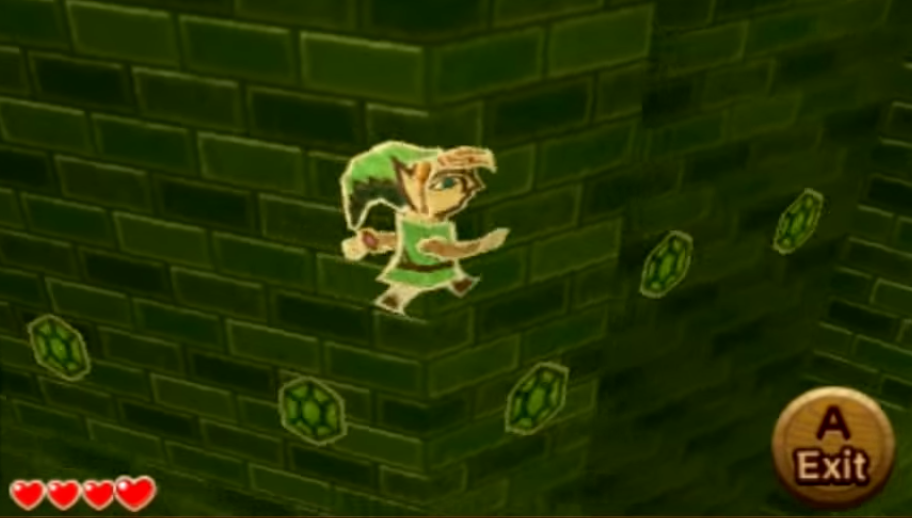
I remember reading Michio Kaku’s book Hyperspace, which asks what existence would appear like to beings that existed in more or less than three dimensions. When Link becomes 2D, the world becomes 3D. Instead of a pseudo-2D fixed perspective that mimics the flat design of the SNES game, the camera pulls in and the player can move in and out of the world in new ways. This also gives a whole new dimensionality to the dungeons. What seems like a dead end in 3D is another opportunity for puzzling in the 2D transition. The dialogue the designer has with the player takes on a completely new vantage point, encouraging exploration in a very different way from A Link to the Past.
But it wasn’t just there that the gameplay had diverged. Nintendo ditched the linear progression of the original Link to the Past by granting players access to almost all the equipment from the outset, thanks to the travelling salesman Ravio. Ravio is a mysterious figure, similar to the Happy Mask Salesman in Majora’s Mask, who clearly knows more than he’s letting on. Also like the H.M.S., he has access to a key item that changes the nature of the game. In Majora’s Mask, that was the Deku mask that allowed Link to transform into a Deku, in A Link Between Worlds it’s Ravio’s bracelet, which is the item that allows Link to become a painting. (The nod to Majora’s Mask here is supported by the fact that said mask is hanging on Link’s wall)
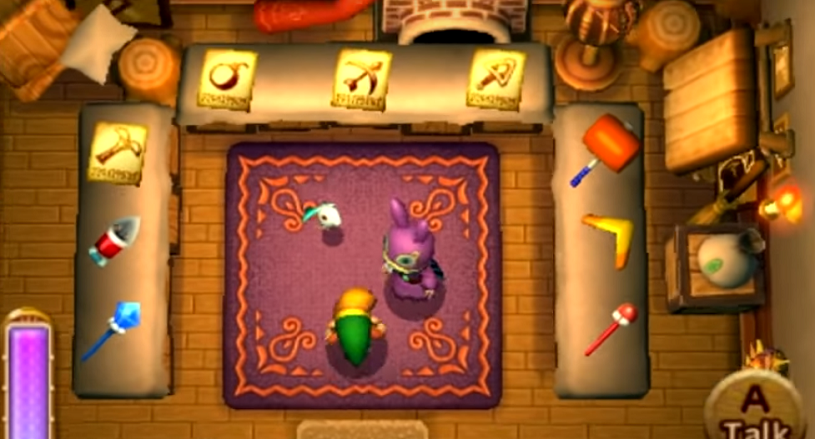
Since Ravio offered the player access to all of the major quest items at once, dungeons could more or less be tackled in any order the player wanted, with markers and item-specific roadblocks indicating what Link needs to rent from Ravio to complete them. But the fact that Link doesn’t actually own the gear, and has to return the rental if he dies, raises the stakes and makes each life have more significance than in other Zelda games.
After Link acquires the Master Sword, Ravio allows Link to buy the items permanently. This is important because after you purchase the items, you can upgrade them. At the same time, I kind of wished the rental system would have remained intact, as being able to outright buy everything took away that sense of risk and reward that was tied to a temporary rental.
Zelda games live and die by their inventories. A lot of familiar favourites make a return in A Link Between Worlds: The hookshot, bow and arrow, hammer, bottles, and ice and fire rods. I did miss A Link to the Past’s Staff of Somaria, which allowed Link to create magical blocks, as well as the magic medallions. In their places, Link has a Tornado Rod, which, as the name suggests, lets him create a big whirlwind and ride air currents. My favourite new item is the Sand Rod, which lets Link build a wall in the desert, leading to some of the most clever conundrums in the game. In the Desert Palace, there’s one area where heavy balls are rolling across a broken pathway. Link needs to make a bridge of sand under all the missing segments to help break a block on the other side, which in turn releases sand into the adjacent hallway and helps Link reach a new section. One tricky heart container requires Link to combine the Sand Rod with a perfectly-timed bomb.
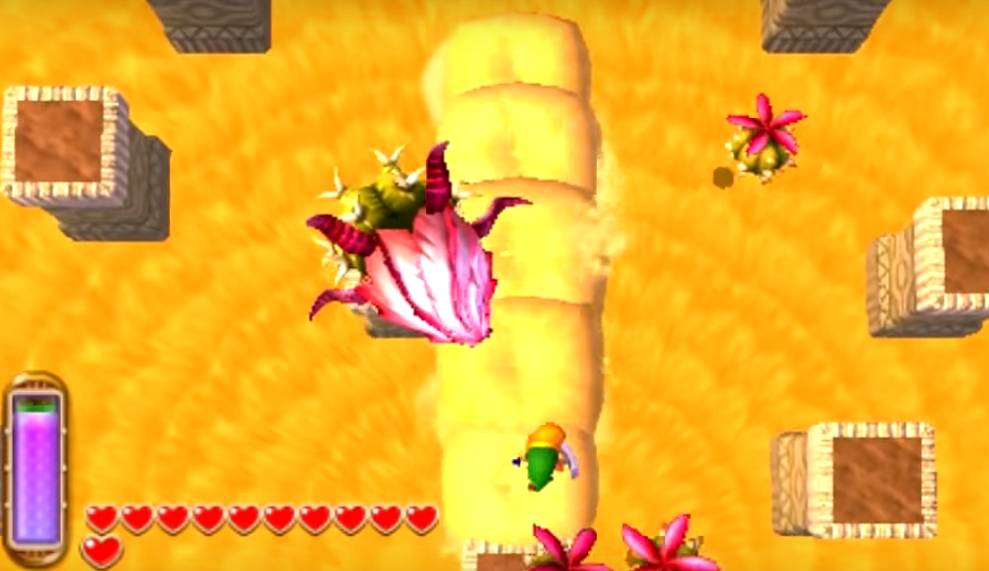
The boss battle against Zaganaga is one of the few I really struggled with in the journey. It’s a massive plant thriving in quicksand, kind of like a mobile Sarlacc Pit. The Sand Rod allows Link to build bridges across the quicksand and fight off the beastly plant to avoid an ignominious death. Too bad Boba Fett didn’t have a Sand Rod.
A Link to the Past had great dungeons, but A Link Between Worlds improved on almost all of them. There’s always an elegance to Zelda dungeons, carefully crafted together so that the difficulty curve is smooth and feels fair, even if challenging. In both games, there’s a Thieves’ Town, though the dungeon itself is referred to as the Hideout in the newer one. In both, you rescue a prisoner. But in the first, she primarily followed Link and revealed herself to be the villain when you exposed her to the light. In Link Between Worlds, the prisoner plays an essential role in solving the puzzles, actively aiding Link and making previously inaccessible areas open up. I loved the way the game forced me to use the merging ability to find new paths for the Thief Girl, helping us form a bond.
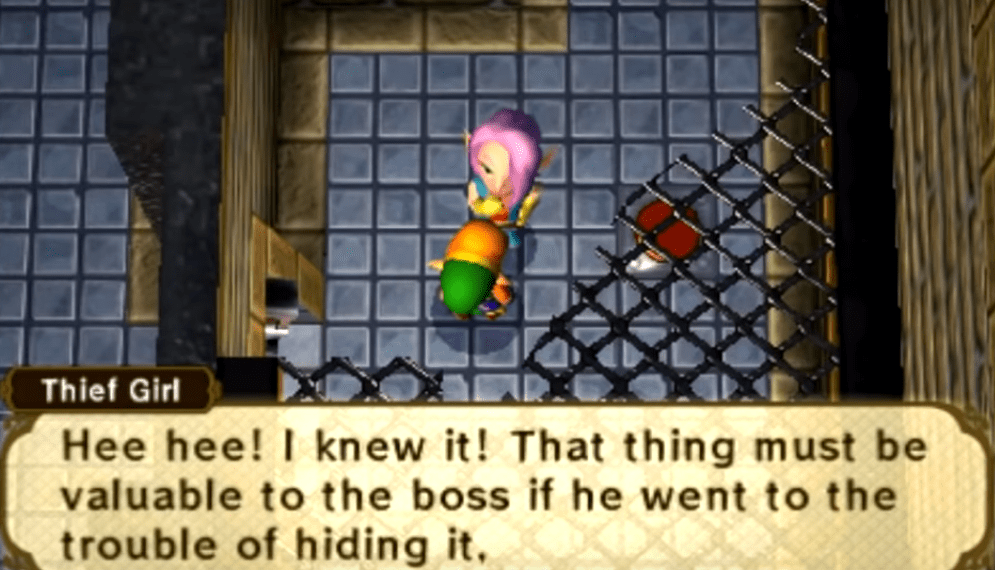
The surrounding areas also seem similar on the surface, but reveal more divergences. The Dark World felt like pure evil that had to be vanquished, but its equivalent in A Link Between Worlds, called Lorule, was a place that had been sapped of good, hopelessness pervading in its place. I felt a deeper sense of tragedy for Lorule because of that. While the Village of Outcasts in Link to the Past is full of monsters and actual thieves who steal items from Link, the corruption in Lorule’s Thieves’ Town is almost spiritual in nature.
The chief of Lorule’s Thieves’ Town is creepily fanatical, demanding that his people wear a mask to protect themselves from monsters. “Monsters can keep you strong! They are your only salvation, my son! You must don the mask!” he yells. The citizens are the completely demoralized counterparts to the ones in Kakariko Village, and their fear has warped them into beings that are almost unrecognizable. The captain whose sword initiated the whole journey is languishing in the milk bar, drowning his woes away with dairy shot after dairy shot.
It’s Link’s job to try to overturn that, and this motif of illuminating the destitution is best exemplified in the Dark Palace. The theme of the dungeon is all about utilising light shafts and illuminating the lower depths so that Link can see the pathways below. Carefully placing bombs and seeking crumbling walls that sometimes even the light obscures is key to the multi-leveled dungeon.
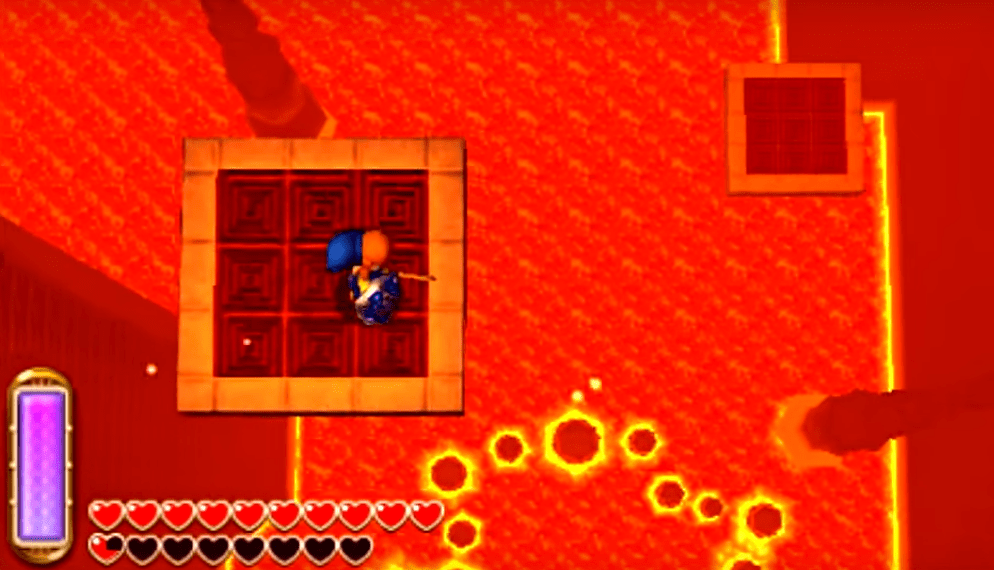
The game plays with dimensionality to great visual effect, thanks to the jump to polygons. The Ice Ruins from Link Between Worlds share a theme with the Ice Palace of A Link To the Past. But this time, as the ruins are in Death Mountain, it adds a series of platforms that act as mining elevators, plunging Link into the depths. In the Rosso Mine, I felt genuine vertigo staring down at the massive lava pit as I leapt from platform to platform. Ascending up the outside of Hyrule Castle as I tried to catch up with Yuga was intimidating despite the fact that I’d climbed up the palace before in A Link to the Past. As I moved around the outside of the castle as a 2D painting, the height actually made me feel nervous and had me clenching my 3DS carefully.
Skull Woods is as confusing as the Lost Woods. In both games, the forest sections involve multiple entrances and exits. But in A Link Between Worlds, my most dreaded enemy in the series, the Wallmaster, was back, and as annoying as ever. They add a sense of tension to every area since they can drop on top of Link and whisk him away. But unlike in previous iterations, these dreadful hands now play an important role in dungeon progression. There’s parts in Skull Woods where a grated path blocks the Wallmaster from dropping all the way to the ground level where Link is. Players can use that disparity to actually crush enemies above him and in some cases, trigger switches he can’t access otherwise.
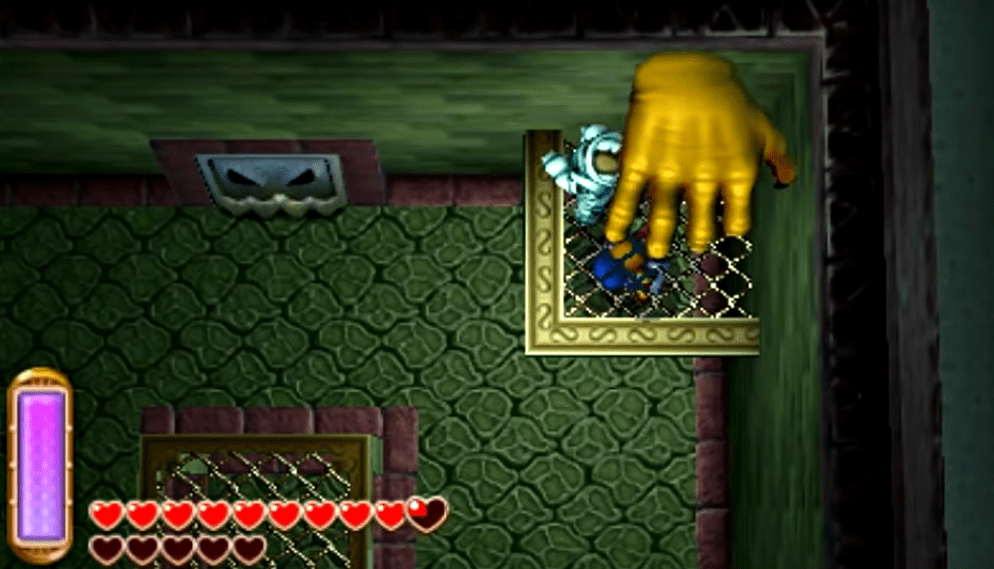
The final boss is the ultimate Wallmaster, who slams into Link and breaks the floor at the same time. When the Wallmaster becomes a rocket fist hurtling at Link, I didn’t know what to do as I couldn’t seem to fend it off. Struggling with this enormous hand, I kept on getting pummelled until I realised I had to use wall merge. This caused the Wallmaster to slam into the wall, making it become disoriented (never mind the questions about if it has a brain in its hand).
Any time I couldn’t figure out what to do next in a given section, the solution usually involved a reexamination of the three-dimensional perspective. Link Between Worlds makes sure to reward exploration with additional upgrades like heart containers and bottles. But there are also a few improvements from the original that enhance this sense of discovery.
The first is that the rupee limit is ten times higher than the first game’s 999, making rupee chests always worth the effort of tracking them down. Link needs all of them, too, if he plans on buying the gear, making this one of the first Zelda games where I hoarded all the rupees I could find.
Secondly, the Maiamai creatures that are spread throughout both worlds can upgrade your equipment and are craftily hidden on the walls, necessitating wall merging almost everywhere on the overworld. They make squeaking sounds whenever they’re around, making me explore everywhere I could, since they’re often not immediately visible. The walls had become a flat new world to uncover, making this Zelda a link between three worlds, not just two.
The Link Between Lorule and Hyrule
As much as I liked the changes to the layout of the dungeons, there was also a familiarity to them. Obviously, A Link to the Past was a completely new game, whereas A Link Between Worlds, even with all its differences, is set in the same world and shares the same overworld map. What ultimately made me appreciate A Link Between Worlds more than its predecessor was the narrative, and how it gave meaning to the journey in a very different way than A Link to the Past’s.
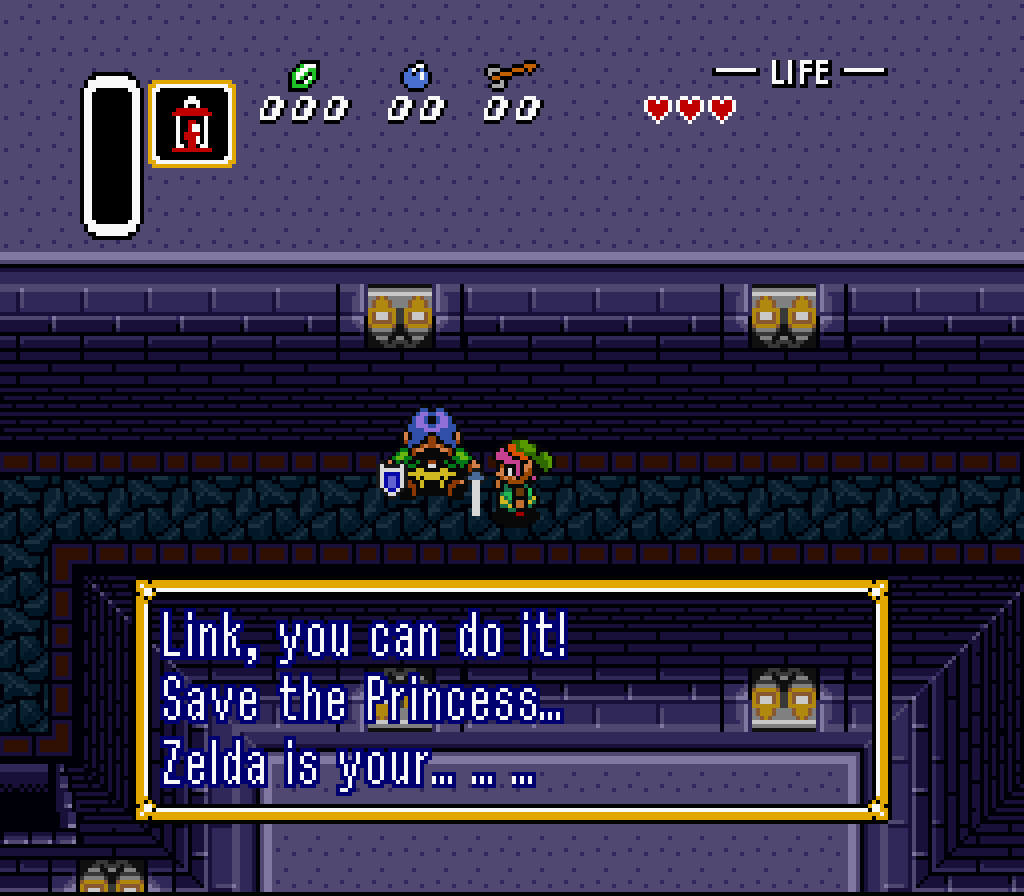
A Link to the Past could be described as a revenge story. Link seeks retribution for the death of his uncle and kills a lot of soldiers in the process. A Link Between Worlds has a humbler opening. Link is a blacksmith’s apprentice and only gets sucked into matters while acting as a delivery boy for a sword. There’s no dramatic rainy night to spur the quest, and in the early parts of the game, it almost feels like it’s intended for a younger audience — another reason why I’d given up on it the first time.
The sorcerer Yuga, who plays a function similar to the original’s Agahnim, transforms his victims into paintings. Yuga is obsessed with beauty and art, so instead of encasing the descendants of the seven sages in a crystal, he turns them into paintings. Zelda villains tend to have simple life goals. They want the Triforce or some other Macguffin so they can be granted wishes and wield unlimited power like a god. Even the non-Ganon villains tend to be binary in their goals. The more interesting characters tend to be the games’ casts of eclectic NPCs, the most notable of those being in Link’s Awakening and Majora’s Mask. One of my favourite NPCs in the series, Flute Boy, is in A Link to the Past, and I loved how sad and mournful that whole sequence of wistful ageing and nostalgic music mix together.
In Link Between Worlds, the whole time Link pursues Yuga, I assumed it was Ganon pulling the strings. When Link arrives in Lorule, he meets Princess Hilda, the world’s counterpart to Princess Zelda. She aids Link and seems to want to rescue her world. I went about my task, presuming she was just another generic character that I’d soon forget. But towards the end of the game, she reveals a tragic history.
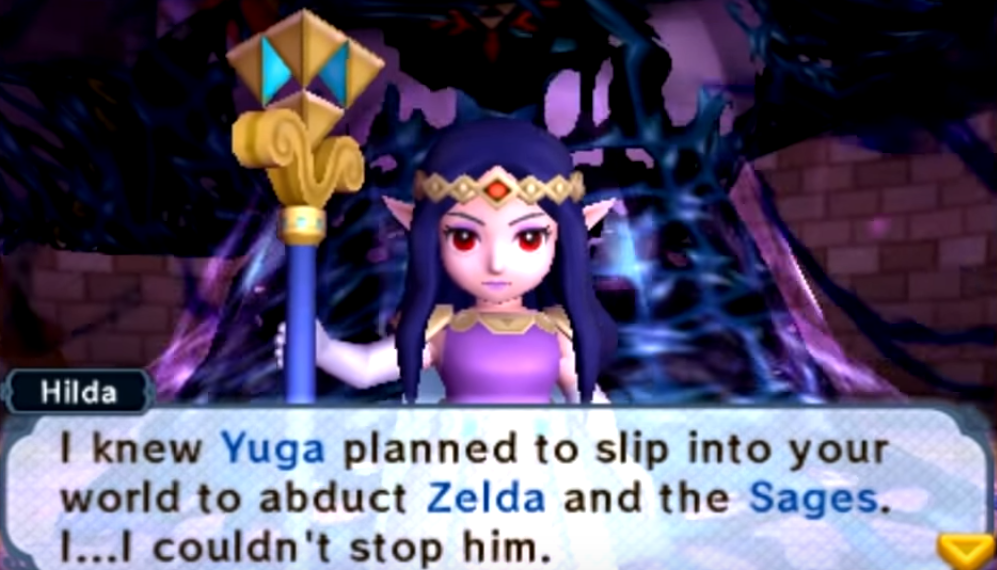
Like Hyrule, Lorule was once a teeming kingdom. But the desire for the Triforce nearly destroyed their world. They decided that rather than deal with the great power and threat that the Triforce brought, they would get rid of it “by destroying it. Utterly and absolutely.” But without the Triforce, “our kingdom crumbled,” Hilda tells Link. At its narrative core, A Link Between Worlds is a look at a world in decay where everything has gone terribly wrong. Their ancestors made a horrible choice that has had devastating repercussions for ensuing generations, and their legacy is still felt in the corruption of Lorule. Rather than try to fix their own world, Hilda and Yuga carry out a plan to infiltrate Hyrule, steal their triforce, and resurrect Ganon.
In this case, Ganon is the one being used by Princess Hilda, who conceived of the plan to infiltrate Hyrule in the first place. “How terribly sad for Princess Hilda to be driven to such desperation!” Princess Zelda comments. “Her kingdom was in such a sorry state.” It put the whole journey in a completely different context, transforming it from what might have been another “Ganon wants to take over the world” plot into one where a princess wants to save her world by carrying out an unspeakable evil. When it’s Ganon stirring up trouble, it’s pretty clear he needs to be taken out. But in this case, where Hilda is just trying to save her kingdom, there was an ambivalence to my mission that I hadn’t felt since waking the Wind Fish in Link’s Awakening.
The final confrontation was a completely new take on the usual Ganon formula. I was still using the light arrows, but in the 2D-painting mode. Aside from the obvious meta throwback to the original Zelda games (especially The Adventure of Link), the final solution is one of the most interesting: Rather than fire at Yuga Ganon head-on, the key is to shoot the other way, taking advantage of the 2D plane and letting the arrow fly all around the walls of the room and hit him from the back.
It was the ending reveal that really caught me off guard. All along, I knew Ravio was someone important. He is the one that gives Link the ability to become a painting as well as use his old items. But I didn’t suspect he was actually Link’s counterpart in Lorule, the opposite of the heroic Link. He was a coward who didn’t have the courage to face Hilda and Yuga himself. Instead, he has to find the Link of Hyrule to fight for him and helps the hero at his own profit. In retrospect, this should have been obvious considering he wears a rabbit suit, a throwback to the Dark World manifestation of Link from A Link to the Past.
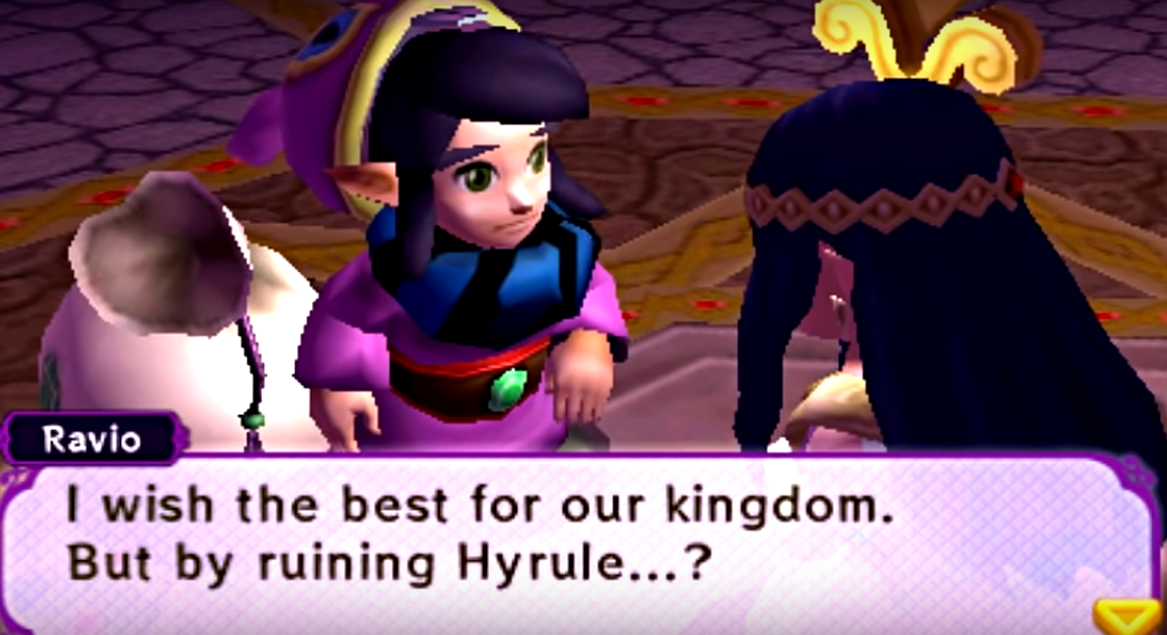
Putting aside the nod to the idea of Dark Link, it was the first time I thought of Link in a new light. For the most part, we take it for granted that Link is a hero, always answering the call to fight for whoever needs his aid. In the case of Ravio Link, he’d done the opposite. I had to wonder, how did he gain access to all the equipment in the first place? Had he taken it from the dungeons himself, which was why they were no longer there? Was he once heroic, but became disillusioned because of the overwhelming odds against him without the aid of the Triforce? Did that then imply that without the Triforce, the Link we know wouldn’t be who he is? The title of the game takes on new significance as we ponder about the actual Links between the two worlds, and how different they are.
Playing this game during this pandemic, I couldn’t help but empathise with the people of Lorule. I feel that same sense of doom and helplessness now. As the infection rate goes up, I wonder what our future holds, knowing that our future generations will feel the impact of the choices we make today. I could totally understand why Ravio pretty much said, “Screw it, I’m escaping this surreal hellhole and jumping to this paradise where I can focus on making a profit.” His guilt drives him to try to help the other world’s Link, but it’s not like he does it for free or purely altruistic purposes.
Since Link actually lives up to the hype, Ravio gets philosophical, musing on existence, retirement, and naps. “I’ve never really had the time to take a lot of naps before. The world looks so different from here!” he says, and then: “Sometimes just changing your perspective is the key to… well, to everything!” Gone is the silent protagonist, and we instead get the most talkative Link of the series.
The music throughout the game is great, even if many are remixes from the original. A personal favourite was Ravio’s theme song, which is whimsical, enigmatic, and yet somehow plaintive. The same Dark World theme plays in both games, and I love the new remix. After gaining all seven paintings in Link Between Worlds, a more hopeful and epic rendition of the track replaces the older one, which was a change I really liked for giving me a sense of optimism. Likewise, when Ravio, inspired by Link, finally steps up to try and stop Hilda, there’s an acknowledgement that by letting Link and Zelda return to Hyrule, they might be damning themselves. But they still send the two back.
I found their choice moving.
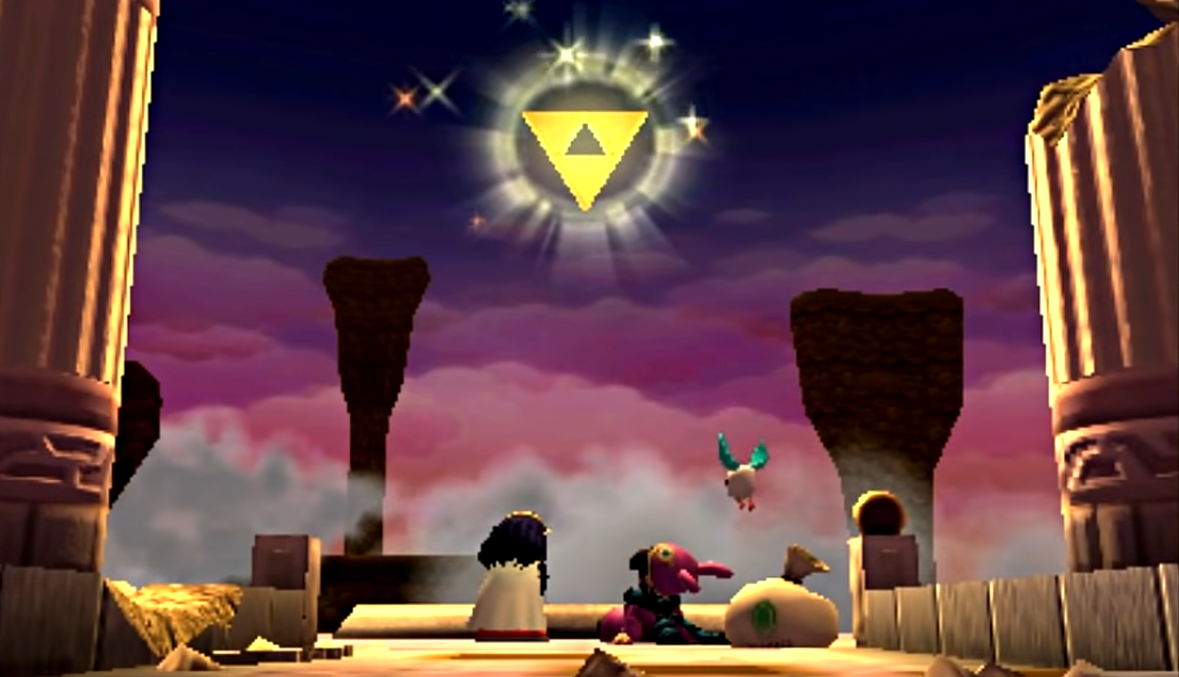
In A Link to the Past, Link uses his wish from the Triforce to revert things back to the way they were, resurrecting his uncle and saving Hyrule. In A Link Between Worlds, Link gives Lorule their Triforce back. The shock and surprise on Hilda’s and Dark Link’s faces is palpable. I couldn’t help but wonder: How will they use their newfound power? Will it bring grief and strife back, since the root causes behind the Triforce’s woes are still there, or will they have learned their lesson and seek a better balance? These are the kind of questions I rarely feel in a Zelda game, and are a big part of why A Link Between Worlds felt so special to me.
Zelda games seem to work best in pairs, whether it’s the Oracle games, or Ocarina of Time and Majora’s Mask. A Link Between Worlds is no exception and works brilliantly together with A Link to the Past. Now, if only we could have a proper sequel to The Adventure of Link in the same style, I’d be a truly happy gamer.
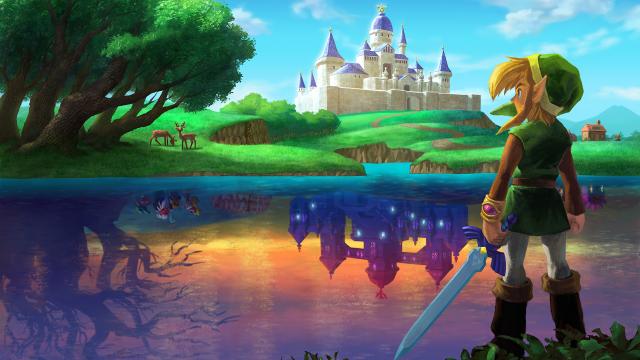
Leave a Reply